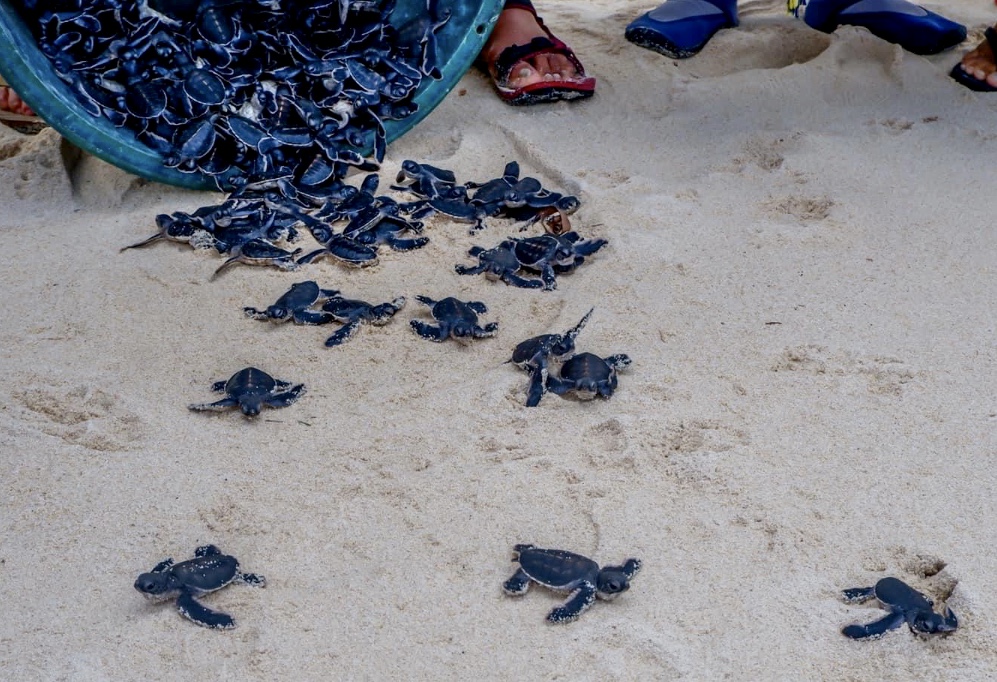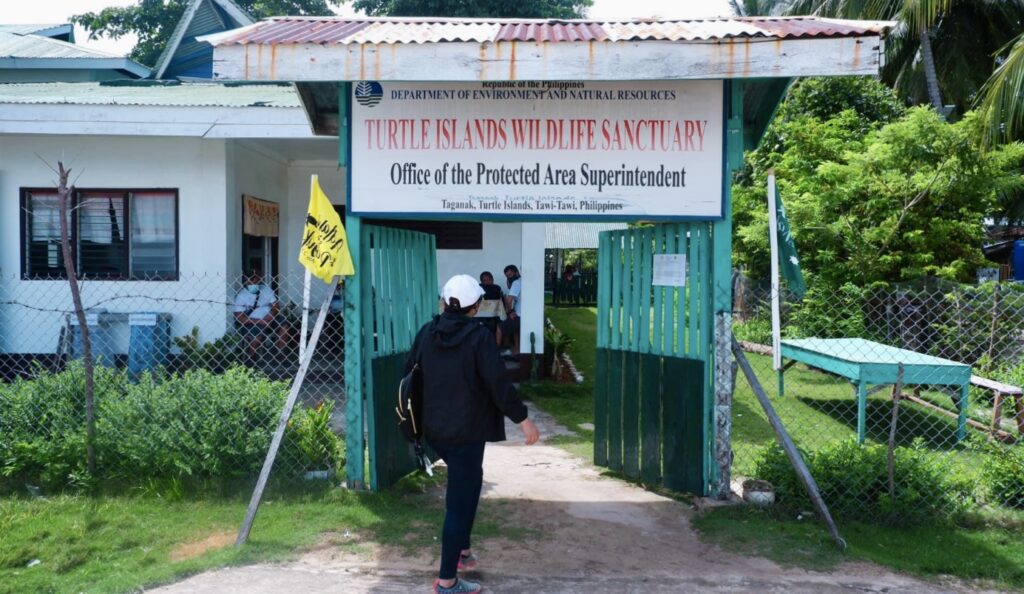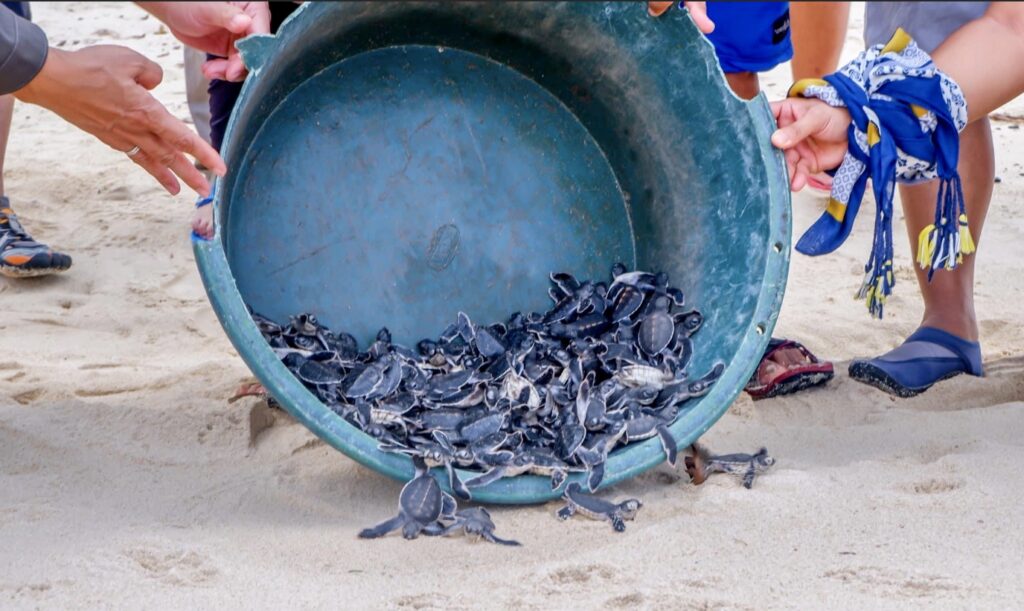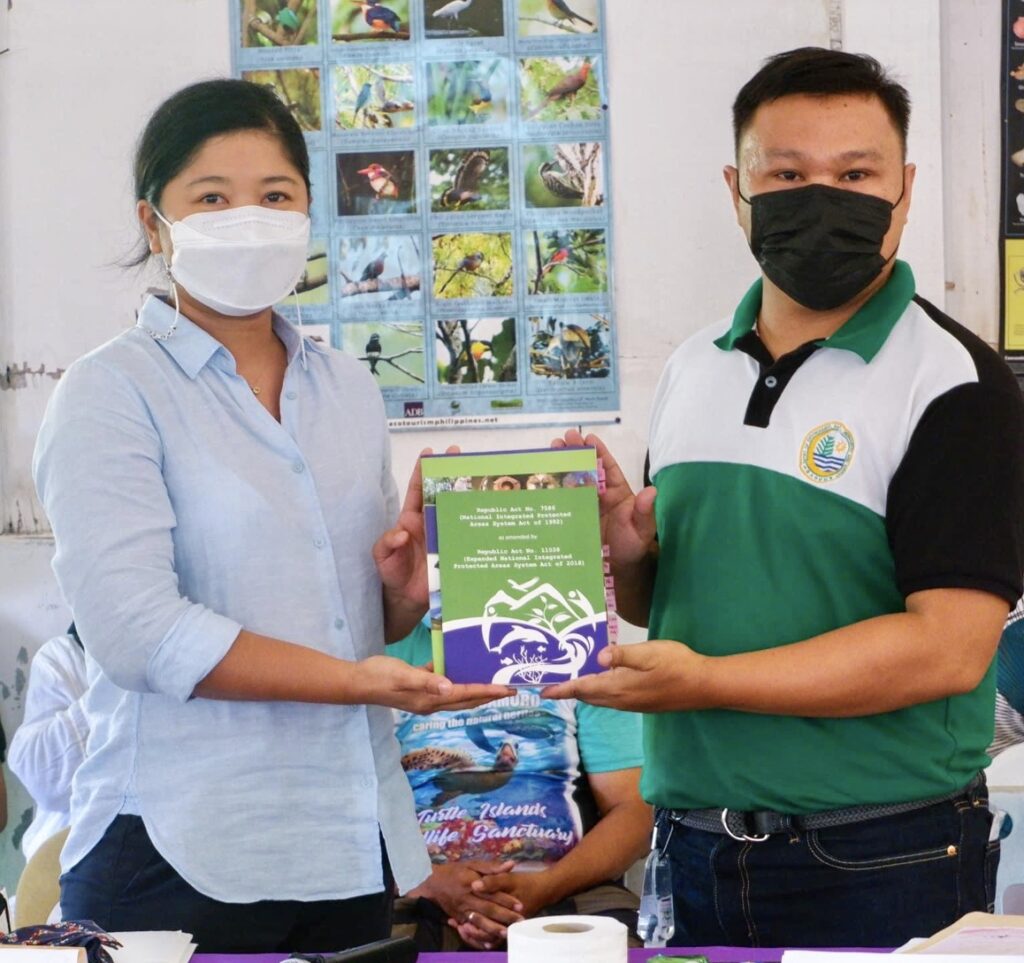Text by Henrylito D. Tacio
Photos courtesy of MENRE
The Department of Environment and Natural Resources (DENR) of Region 9 officially turned over the Turtle Islands Wildlife Sanctuary (TIWS) to the Bangsamoro Autonomous Region in Muslim Mindanao (BARRM) last May 23 at Baguan Island.
The Ministry of Environment, Natural Resources and Energy (MENRE) reported in its social media account. The MENRE received the 242,967-hectare sanctuary on behalf of the Bangsamoro Government.
“It is the mandate of MENRE to formulate policies and guidelines, and will implement programs, activities and projects for the protection and preservation of the biological diversity and the endangered flora and fauna in the Bangsamoro region,” said BARMM Senior Minister and MENRE Minister Abdulraof A. Macacua whose acceptance was read by Director Abdul-Jalil S. Umngan.
“Rest assured that our mission now includes the protection and conservation of the Turtle Islands Wildlife Sanctuary, its biodiversity, flora and fauna, and the habitat that’s inseparable from the survival of the species relying on the beauty of the islands,” he added.
Umngan is the MENRE Forest Management Services Director. The designated Head of Delegation for the activity received two books containing a collection of laws, rules, and regulations concerning the management of the protected area from DENR-9 regional executive director Cristanta Marlene P. Rodriguez.

There they go 
TIWS office
“We have cherished our role in Turtle Islands Wildlife Sanctuary, proving time and time again that although distance has always been a challenge, it was never regarded as a hindrance to our efforts in environmental protection and biodiversity conservation,” Rodriguez pointed out.
As provided in the Bangsamoro Organic Law, the Bangsamoro Government through the MENRE shall give priority to the protection, conservation, and development of natural resources that will support ecological balance and biodiversity conservation.
The Turtle Islands were constituted as a “special municipal district” under the jurisdiction of the Province of Sulu under Executive Order 95 signed by President Manuel Roxas on October 13, 1947.
Haven for marine turtles
The Turtle Islands – composed of Baguan, Taganak, Lihiman, Boan, Langaan, and the Great Bakkungan – are named so because they are the revered habitat of the endangered marine turtles. All islands, except for Baguan, are inhabited by people.
According to Wikipedia, access to the Turtle Islands is difficult, “as there are no regular means of transportation to the area.” In a way, this hindrance “has kept the islands protected from turtle egg poachers.”
Located along the boundary of the Philippines and Malaysia (to which the three remaining islands – Gulisaan, Selingan and Bakkugan Kechil – belongs to), this group of islands used to be a favorite weekend destination of British excursionists and other nationals from North Borneo (now Sabah).

Release of marine turtle hatchlings 
Handing over the books
Annually, at least 2,000 marine turtles swim to the sanctuary to lay their eggs. During peak season (from May to July), 80-150 turtles lay eggs every night. Unfortunately, according to studies, only about 1% of the turtle hatchlings have a chance to survive.
Together with the three islands of Malaysia and the surrounding coral waters, Turtle Islands are one of the world’s few remaining major nesting grounds for the Green sea turtles (known in the science world as Chelonia mydas). The Hawksbill turtles (Eretmochelys imbricata) also do “but with a low-density nesting in contrast to the Green sea turtles.”
In 1996, the islands were declared as Turtle Islands Heritage Protected Area by both governments of Malaysia and the Philippines as the only way to guarantee the continued existence of the endangered marine turtles and their nesting sites.
“For the five islands, the Philippine government decided to create special protection zones, and within these zones, only scientific and conservation activities are allowed,” Wikipedia reports. “In other zones, certain rules are adapted to prevent too much impact by people on the environment and the turtles. Visiting these zones is only possible with strict guidance and under supervision of the staff of the officials of the government.”
Several laws have been passed to protect the Turtle Islands from exploitation. In 1982, Administrative Order No. 33 established an arrangement wherein 30% of the turtle eggs are for conservation, 10% for the foundation, and 60% for exploitation.
In 1999, through presidential proclamation, the six islands were declared a wildlife sanctuary. In 2001, Republic Act 9147 was signed, paving for the prohibition of the collection of threatened wildlife (including marine turtles) and its derivatives for non-scientific and breeding purposes.
Living fossil
One of the gentlest creatures ever to exist, the marine turtles have roamed the tropical seas for 130 million years without much change in appearance, earning the moniker the living fossil.
Marizal Calpito and Lourdes P. Calacal of the Department of Environment and Natural Resources (DENR) noted: “Some 200 million years ago, marine turtles developed as the earth throbbed with dramatic geophysical changes – surviving as their living conditions changed, adapting to the natural rhythms of prehistoric life. Down through the ages, they thrived, remaining much the same as their hardy ancestors.”
There are only eight species of marine turtles known. Five of them can be found in the Philippines, mainly in the Turtle Islands. Aside from Green Sea turtles and Hawksbill turtles, the following also swim the country’s waters: Loggerhead turtles (Caretta caretta), Olive Ridley turtles (Lepidochelys olivacea), and Leatherback turtles (Dermocheyls coriacea).
The three other species, which the Philippines doesn’t have, are the Kemp’s Ridley turtles (Lepidochelys kempi), Flatback turtles (Chelonia depressa), and Black sea turtles (Chelonia agassizi).
Unfortunately, all eight species are listed under Appendix I of the Convention on International Trade of Endangered Species of Wild Fauna and Flora (CITES), which means the trade of these species and subspecies is strictly “prohibited except for educational, scientific or research and study purposes.”
The Conservation of Nature and Natural Resources (IUCN) has also classified the eight species as endangered. This is so because “their populations are in danger of extinction and whose survival is unlikely if the causal factors continue to operate.”
Facing extinction
The marine turtles, locally called pawikan, are known as the “gardeners of the oceans.” As such, they play an important role in the food chain.
“Belonging to the family of Cheloniidae, sea turtles are agents for the dispersal of plants and nutrients in the sea as well as on the beaches where they nest,” the World-Wide Fund for Nature (WWF) says.
“They keep corals healthy by eating algae, which would otherwise smother the reefs if left unchecked. They are food for a wide array of predators, from birds to sharks, and in areas where turtles are present in abundance, they also provide humans with meat and eggs,” WWF adds.
Having survived natural hazards for millennia, marine turtles are now under severe threat from human activity. They are hunted for meat and leather; their eggs are taken for food and aphrodisiacs. Their nesting sites go for development. They are ground up by dredges, run over by pleasure boats, poisoned by pollution, strangled by trash, and drowned by fishline and net.
Despite sincere efforts by the government and environmentalists to prevent the further decimation of the marine turtle population, the gathering of turtle eggs and trading of stuffed turtles in souvenir shops remain unabated.
“Unless we seriously take on the task of protecting the much-endangered marine turtles, these ancient creatures will soon be extinct,” a Filipino environmentalist deplored.

